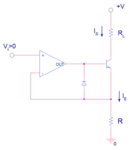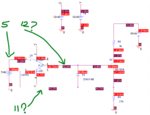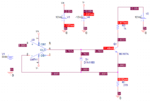rvijelie
Newbie level 3

Hello everyone, I have this problem where i need to propose the supply/input voltage and the output current (that I want to obtain) and then to calculate and choose the correct components so my circuit can work.

So, I choose the supply to 5V and the output that i want to obtain to 20mA. From my calculations, I got R = 250ohms, and i choose it 270ohms (standard). But now, my teacher wants to calculate the values for the NPN transistor and choose one properly (I choosed bc107a, but i dont think it's good, because i didn't make any calculations). I also tried to do my best with the schematic in orcad.

Can i get a little help?

So, I choose the supply to 5V and the output that i want to obtain to 20mA. From my calculations, I got R = 250ohms, and i choose it 270ohms (standard). But now, my teacher wants to calculate the values for the NPN transistor and choose one properly (I choosed bc107a, but i dont think it's good, because i didn't make any calculations). I also tried to do my best with the schematic in orcad.

Can i get a little help?





